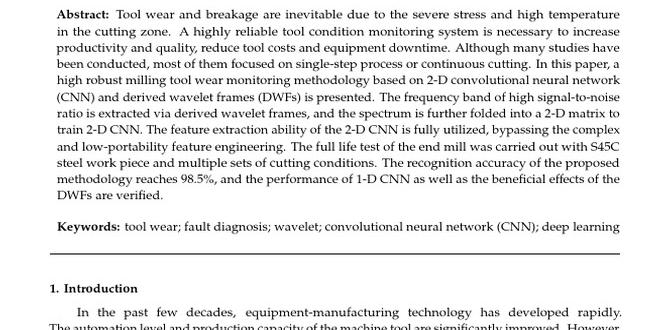Get started fast with 1/8 inch carbide end mills for dry cutting! These versatile tools are perfect for hobbyists and pros alike, letting you precisely cut materials like aluminum and plastics without coolant. Learn the basics of choosing, using, and maintaining them for successful projects.
Hey everyone, Daniel Bates here from Lathe Hub! If you’ve ever stared at a piece of metal or plastic and wondered how best to shape it, you’re in the right place. Today, we’re diving into a tiny but mighty tool: the 1/8 inch carbide end mill, specifically for dry cutting. This little guy can seem tricky, especially when starting out. You might find it frustrating to get clean cuts or worry about damaging your workpiece. But don’t sweat it! We’re going to break down exactly what you need to know, step-by-step, so you can confidently tackle those projects. We’ll cover everything from picking the right end mill to making sure your cuts are smooth and accurate. Stick around, and you’ll be a pro at dry cutting in no time!
Why Choose a 1/8 Inch Carbide End Mill for Dry Cutting?
So, why all the fuss about a small 1/8 inch carbide end mill, especially for dry cutting? It comes down to precision, material versatility, and simplicity. These end mills are like the sharpest, most precise tiny chisels for your milling machine (or CNC router). They excel at creating intricate details, slots, pockets, and even 3D shapes in a variety of materials.
Carbide offers several advantages over traditional high-speed steel (HSS). It’s incredibly hard and can withstand higher cutting temperatures, which is crucial when you’re not using coolant. This hardness means it stays sharp longer and cuts through tough materials more efficiently. When we talk about “dry cutting,” it means performing the milling operation without the use of any cutting fluid or coolant. This is often preferred in certain applications where coolant might contaminate the material, is messy to clean up, or simply isn’t necessary for the material being cut. For hobbyists and home workshops, dry cutting often simplifies the setup and cleanup process.
The 1/8 inch size is particularly useful for fine detail work. Think about creating small, accurate slots for electronics enclosures, delicate engraving, or machining tiny parts for models and prototypes. It’s small enough to get into tight spaces but substantial enough to handle decent material removal when used correctly.
Understanding Carbide End Mills: Key Features
Before we start cutting, let’s get familiar with what makes a 1/8 inch carbide end mill tick. Understanding these features will help you choose the right one and use it effectively.
Material: It’s All About Carbide
As the name suggests, these end mills are made from tungsten carbide. Carbide is a composite material known for its extreme hardness and wear resistance. This makes it ideal for cutting harder materials and for high-volume production where tool longevity is key. While harder, carbide can also be more brittle than HSS, so it’s important to avoid excessive shock or vibration.
Flute Count: How Many Teeth?
The “flutes” are the spiral grooves that run along the cutting edge of the end mill. They channel away chips and help cool the cutting edge. For dry cutting, especially with materials that produce small, fluffy chips like aluminum or softer plastics, the flute count is important:
- 2 Flutes: These are often the best choice for dry cutting, particularly in softer, gummy materials like aluminum. The larger chip gullets (the space between the flutes) allow for better chip evacuation, reducing the risk of the material welding to the cutter. They also generate less heat than higher-fluted cutters.
- 3 or 4 Flutes: These offer a smoother finish and are better for harder materials or when general-purpose machining is needed. However, for dry cutting in many common materials, they can lead to increased heat buildup and chip packing due to smaller chip spaces. They are generally better suited for wet cutting or specific material types where fine chips are not an issue.
For beginners focusing on dry cutting with typical hobbyist materials like plastics or softer metals, a 2-flute end mill is usually your safest and most effective bet.
Shank Diameter: The Handle
The shank is the non-cutting end of the end mill, which is held in the milling machine’s collet or tool holder. While the cutting diameter is 1/8 inch, the shank can vary. For a 1/8 inch end mill, you’ll most commonly find it with a 1/8 inch shank. However, you might also see options with larger shanks, like 1/4 inch or 3/8 inch. A larger shank provides more rigidity and can simplify fixturing, especially if your machine’s collets are sized for larger tools. If you have a 1/8 inch collet set, sticking with a 1/8 inch shank is straightforward. If you plan on using larger shanks, ensure you have the appropriate collets or adapters.
Length and Reach: Getting Deep or Staying Shallow
End mills come in various lengths and reach capabilities. “Reach” refers to how far the cutting flutes extend down the tool. For a 1/8 inch end mill:
- Standard Length: These have flutes that cover a significant portion of the tool’s length, suitable for general pocketing and contouring.
- Long Reach / Extended Length: These have longer flutes, allowing you to mill deeper pockets or reach further into workpieces. Be cautious with long reach end mills, especially in smaller diameters, as they are more prone to vibration and deflection.
For most beginner dry cutting tasks, a standard length 1/8 inch end mill will suffice. If you specifically need to machine deep features, consider a long reach, but be prepared for slower feed rates and potentially more chatter.
Coating: An Extra Layer of Performance
Some carbide end mills come with coatings. While not always essential for basic dry cutting, coatings can enhance performance:
- Uncoated: Many carbide end mills are left uncoated. They perform well and are often more cost-effective.
- TiN (Titanium Nitride) or TiCN (Titanium Carbonitride): These golden or gray coatings add a bit of hardness and lubricity, helping to reduce friction and heat.
- AlTiN (Aluminum Titanium Nitride): This black or purple coating is excellent for high-temperature applications and offers good performance in materials like aluminum and stainless steel. It’s a popular choice for dry machining.
For general dry cutting of plastics and aluminum, an uncoated or TiN-coated 1/8 inch end mill is usually perfectly adequate. If you plan on working with tougher metals, an AlTiN coating can be beneficial.
Dry Cutting Basics: What You Need to Know
Dry cutting with a small carbide end mill is achievable, but it requires a mindful approach to manage heat and chip removal. Here’s what you need to consider:
Material Selection: What Can You Cut Dry?
Not all materials are ideal for dry cutting. Generally, you’ll have the most success with:
- Plastics: Acrylic, ABS, Delrin (acetal), Nylon, Polycarbonate. These materials melt at relatively low temperatures, so fast chip evacuation and avoiding excessive heat buildup are key.
- Aluminum Alloys: Softer aluminum alloys (like 6061, 5052) are commonly machined dry. Heavier cuts or harder alloys might benefit from a coolant flood, but careful passes with a sharp cutter are often sufficient.
- Wood: While not typically “milled” in the same way as metal, certain hard woods can be machined with end mills, though specialized wood routing bits are usually preferred. Dry cutting is standard here.
Materials like steel, stainless steel, and titanium generally require coolant flood for effective dry cutting. Attempting to mill these materials dry with a small carbide end mill at typical speeds and feeds will likely lead to tool failure, material damage, and a lot of smoke!
Feed Rate vs. Spindle Speed: The Crucial Balance
This is where the magic happens, or where things go wrong, if you don’t get it right. Think of it as a dance between how fast the tool spins (spindle speed) and how fast you push it into the material (feed rate).
- Spindle Speed (RPM): This is how fast your machine’s spindle rotates. For carbide, you generally want to run at higher RPMs than you would with HSS.
- Feed Rate (IPM or mm/min): This is how fast the cutting tool advances into the material. This is critical for chip load.
The goal is to have the end mill remove material in the form of small, manageable chips. If your feed rate is too low for the spindle speed, you get tiny, wispy chips that don’t carry heat away effectively and can recut themselves, leading to rapid tool wear and potential melting. If your feed rate is too high, you’re essentially trying to push the tool through too much material at once, which can lead to tool breakage, chatter, and poor surface finish. This is often called “rubbing” rather than cutting. You want to hear a crisp “shavings” sound, not a high-pitched whine or a dragging sound.
For dry cutting 1/8 inch carbide end mills:
- Start conservatively. It’s always better to be too slow and shallow than too fast and deep.
- Focus on achieving the correct chip load. Chip load is the thickness of the material each flute cuts. For 1/8 inch carbide end mills, chip loads typically range from 0.001 to 0.003 inches per flute.
To calculate your target feed rate, you’ll use this formula: Feed Rate (IPM) = Spindle Speed (RPM) × Number of Flutes × Chip Load (inches/flute)
Let’s run a quick example for cutting 6061 aluminum:
- Spindle Speed: Let’s try 20,000 RPM (common for many small routers and spindles).
- Number of Flutes: We’ll use a 2-flute end mill.
- Chip Load: Aim for 0.002 inches per flute.
Calculation: 20,000 RPM × 2 flutes × 0.002 in/flute = 80 IPM feed rate.
This calculation gives you a starting point. You’ll likely need to adjust based on your specific machine, the rigidity of your setup, and audible feedback.
Depth of Cut and Stepover
When milling, you rarely take the full depth of cut in one pass. You’ll typically make multiple shallow passes.
- Depth of Cut (DOC): For dry cutting, especially with a small, delicate end mill, keep your depth of cut conservative. A good starting point for aluminum might be 0.05 to 0.1 inches (1.27 to 2.54 mm). For plastics, you might go slightly deeper, but always observe the chip formation and sound.
- Stepover: This is how much the end mill moves sideways to cut the next adjacent path. For pocketing, a stepover of 20-50% of the end mill diameter is common. For contouring a profile, a smaller stepover (e.g., 10-20%) will result in a smoother finish.
Heat Management: The Silent Killer
Even with dry cutting, heat is your biggest enemy. Carbide generates heat through friction and the deformation of the material as it’s cut. Without coolant, this heat has nowhere to go but into the tool and the workpiece. The key to dry cutting is the efficient removal of chips, as they carry away a good portion of the heat.
Here’s how to combat heat:
- Use the correct feeds and speeds. As discussed, this is paramount for chip formation.
- Take lighter cuts. Multiple shallow passes create less heat per pass than one deep, aggressive pass.
- Allow the workpiece and tool to cool. If you’re doing a long job, program retract moves occasionally to let air cool the tool and material.
- Consider airflow. A fan blowing onto the cutting area can help dissipate heat, especially when working with plastics.
Choosing Your 1/8 Inch Carbide End Mill: A Practical Guide
When you’re ready to buy, look for end mills that are specifically advertised for the materials you plan to cut. While many general-purpose carbide end mills will work, some are optimized.
For Aluminum and Plastics
Your best bet for dry cutting aluminum and plastics will generally be:
- 2-flute
- Carbide
- Mirror polish or bright finish (indicates a smoother surface, better for chip evacuation in softer materials)
- Possibly coated (AlTiN is great, but uncoated is often fine for hobbyists)
- Sharp edges
Key Specs to Look For:
| Specification | Typical Range / Consideration for 1/8″ Carbide Dry Cutting |
|---|---|
| Diameter | 1/8″ (0.125″) |
| Shank Diameter | 1/8″ (most common), but 1/4″ or 3/8″ may be available for added rigidity. |
| Flute Count | 2 flutes recommended for best chip clearance in softer materials. 4 flutes for harder materials or smoother finishes if not dry cutting. |
| Overall Length | Standard (e.g., 1.5″ to 2.5″) or Extended Reach (longer flutes). Standard is usually sufficient. |
| Flute Length | Determines reach. Shorter flutes are more rigid. |
| Material | Solid Tungsten Carbide |
| Coating | Uncoated, TiN, or AlTiN are common. AlTiN is good for heat resistance. |
| End Type | Square end is most common for general-purpose milling. Ball nose for 3D contouring/engraving. Radius end for chamfered edges. |
A good example search term might be: “1/8 inch 2 flute carbide end mill for aluminum.” If you want more reach, try “1/8 inch 2 flute carbide end mill long reach 3/8 shank”.
Where to Buy: Reputable Sources
For reliable tools, consider these types of sources:
- Specialty CNC Tooling Suppliers: Companies like Harvey Tool, Lakeshore Carbide, or even larger industrial suppliers often have excellent selections.
- Online Marketplaces: Amazon, eBay, and AliExpress have a vast array of options. Be sure to read reviews and check seller reputations carefully. Look for brands known for quality, even if they are sold through these platforms.
- Tooling Sections of Hobbyist CNC Brands: Companies that sell CNC routers or accessories often have their own branded tooling that is suitable for their machines.
Always read product descriptions carefully to ensure the end mill is suitable for your intended application and that the specs match what you need.
Setting Up for Dry Cutting
Proper setup is crucial for a successful and safe dry cutting operation. This involves securing your workpiece and ensuring your machine is ready.
Workholding: Keep it Stable!
This is non-negotiable. Your workpiece MUST be held down firmly to prevent it from moving, vibrating, or flying off the machine. Common methods include:
- Vise: A good milling vise is essential for holding metal parts. Ensure the vise jaws are clean and that you are clamping on a solid part of the workpiece.
- Clamps: Use specialized milling clamps (T-slot clamps) to secure parts to the machine bed or a fixture plate.
- Double-Sided Tape: For softer materials like acrylic, or very light-duty work in aluminum, strong double-sided foam tape can work. However, this offers less holding power than mechanical methods.
- Fixtures: For repetitive tasks, custom fixtures can provide the most secure and accurate holding.
When using a 1/8 inch end mill, the forces are relatively small compared to larger tools. However, even small forces can cause a poorly secured workpiece to shift, leading to inaccurate cuts or a dangerous situation.
Tool Installation: The Right Way
A 1/8 inch end mill needs to be held securely in its collet. Make sure:
- The collet is clean and free of debris.
- The end mill shank is clean.
- You are using the correct size col




